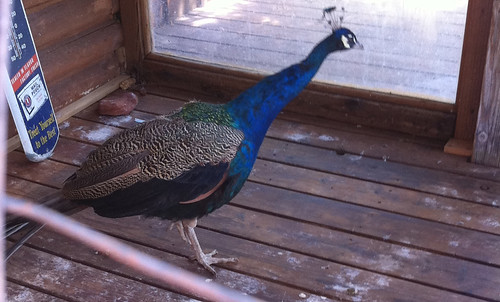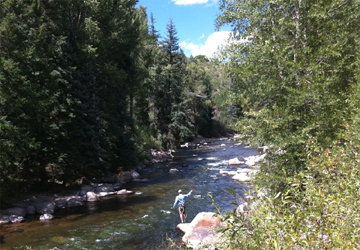The trees:
The dominant trees and shrubs in this community are Gambel oak (Quercus gambelii), Rocky Mountain juniper (Juniperus scopulorum), mountain big sagebrush (Artemisia tridentata ssp. vaseyana), snowberry (Symphoricarpos rotundifolius), serviceberry (Amelanchier alnifolia), and rabbitbrush (Chrysothamnus spp.)
The wildlife:
Mule deer, coyotes, red fox, mink, red tailed hawks, black bears, and great-horned owls are some of the more charismatic wildlife species that incorporate Jaffee Park as part of their home range.
... Both long- and short-tailed weasels occur in and around Jaffee Park, as do American martens. Pine squirrels, least chipmunks, Wyoming ground squirrels, montane voles, and deer mice are the most common prey species.
And birds:
Both the riparian and mountain shrub habitats support breeding Neotropical migratory and resident songbirds. These include green-tailed and spotted towhees, orange-crowned warblers, dusky flycatchers, and chipping sparrows in the upland shrubs, yellow and yellowrumped warblers, black-capped and mountain chickadees, brown creepers, song and fox sparrows, and cordilleran flycatchers in the riparian habitat. Common mergansers, American dippers, mallards, and other species of ducks are often seen in the river at Jaffee Park.
Northern pygmy owls, saw-whet owls, Cooper’s hawks, and American kestrels have all been identified on and around the property.
The park, which used to be home to a gravel pit, has a lot of river access points and good fly-fishing.
The river here is a cascading staircase of riffles, pools, and boulder gardens, set in a densely forested canyon. The fishing can be fantastic, and sometimes it seems every rock has a fish behind it. There are heavy caddis and mayfly hatches in the middle river, and the water is often clearer than down below. For the best fishing, walk up the canyon 10 to 20 minutes before you get in the water.
One final photo: One of the peacocks at Owl Farm:

(Photos taken with my iPhone 4 -- it's a huge improvement over the iPhone 3G.)





